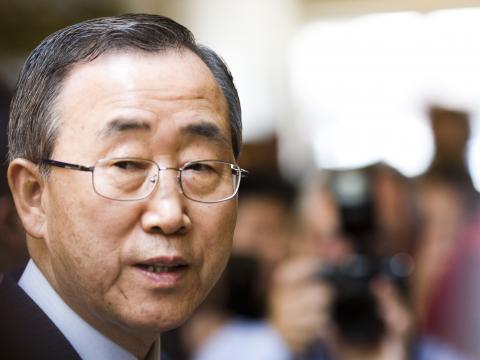Were the Millennium Development Goals a success? Yes! Sort of

The United Nations has hailed the Millennium Development Goals – or MDGs – as “the most successful anti-poverty movement in history.” So have the goals and targets ushered into life 15 years ago achieved their objectives?
“The MDGs helped to lift more than one billion people out of extreme poverty, to make inroads against hunger, to enable more girls to attend school than ever before and to protect our planet,” the UN secretary general Ban Ki-moon recently explained.
But he didn’t finish there. “Yet for all the remarkable gains, I am keenly aware that inequalities persist and that progress has been uneven.”
It’s true remarkable progress has been accomplished. Yet, around 1.5 billion people in conflict affected countries and on the extreme margins of society were unreached by the goals and unable to benefit from the tide that lifted their neighbours.
So which goals were met and which fell short? Below, we’ll broadly examine what has been achieved for the main targets within the eight goals using information from The Millennium Development Goals Report 2015.
MDG 1: Eradicate Extreme Poverty and Hunger
The target of reducing extreme poverty rates – people living on just $1.25 a day – by half was met five years ahead of the 2015 deadline. Globally the number of people living in extreme poverty has fallen from 1.9 billion in 1990 to 836 million in 2015.
However, target of halving the proportion of people suffering from hunger has narrowly been missed. The proportion of undernourished people in the developing regions has fallen from 23.3 per cent in 1990 to 12.9 per cent in 2014.
MDG 2: Achieve Universal Primary Education
Primary school enrolment figures have shown an impressive rise, but the goal of achieving universal primary education has just been missed. The primary school enrolment rate in developing regions reached 91 per cent this year, up from 83 per cent in 2000.
MDG 3: Promote Gender Equality and Empower Women
About two two-thirds of developing countries achieved gender parity in primary education. Progress has been particularly strong in Southern Asia. Only 74 girls were enrolled in primary school for every 100 boys in 1990. Today, 103 girls are enrolled for every 100 boys.
MDG 4: Reduce Child Mortality
The global under-five mortality rate has declined by more than half since 1990 – dropping from 90 to 43 deaths per 1,000 live births. This falls short of the targeted drop of two-thirds.
In practical terms this means 16,000 children under-five continue to die every day from preventable causes. A terrible reality made worse by the fact we know what each one of these major killers are, and what can be done to thwart them.
MDG 5: Improve Maternal Health
Since 1990, the maternal mortality ratio has been cut nearly in half. This is an impressive result, but as well with goal 4 it falls short of the two-thirds reduction that was aimed for. There were an estimated 289,000 maternal deaths in 2013.
MDG 6: Combat HIV/AIDS, Malaria and Other Diseases
The results with MDG 5 are mixed. The target of halting and beginning to reverse the spread of HIV/Aids has not been met – although the number of new HIV infections fell by 40% between 2000 and 2013.
According to the UN, over 6.2 million malaria deaths have been averted between 2000 and 2015, primarily of children under five years of age in sub-Saharan Africa. The global malaria incidence rate has fallen by an estimated 37 per cent and the mortality rate by 58 per cent
MDG 7: Ensure Environmental Sustainably
Between 1990 and 2015, 2.6 billion people gained access to improved drinking water, meaning the target of halving the proportion of people without access to safe water was achieved. Worldwide, 2.1 billion people have gained access to improved sanitation.
MDG 8: Develop a Global Partnership for Development
Official development assistance from wealthy countries to developing countries increased by 66 per cent in real terms between 2000 and 2014, reaching $135.2 billion.
What comes next?
The MDG’s successor – the Sustainable Development Goals – are due to be adopted by world leaders at a summit in New York in late September.
All countries – as well as aid agencies, businesses and the public working in collaborative partnership – will implement this universal agenda for a transformed world. And the first order of business will be “reaching the furthest behind first.”
For World Vision this means reaching vulnerable children in the world’s hardest places to live. They are the children in remote areas, in the midst of intractable conflicts and buffeted by droughts or flooding caused by the effects of climate change.
World Vision believes sustainable development begins with healthy, nourished and well-educated children free from all forms of violence – and the SDGs represent an unprecedented opportunity to make these aspirations a reality. The real work now lies ahead: ensuring these new commitments to transform the lives of the world’s most vulnerable children are kept.